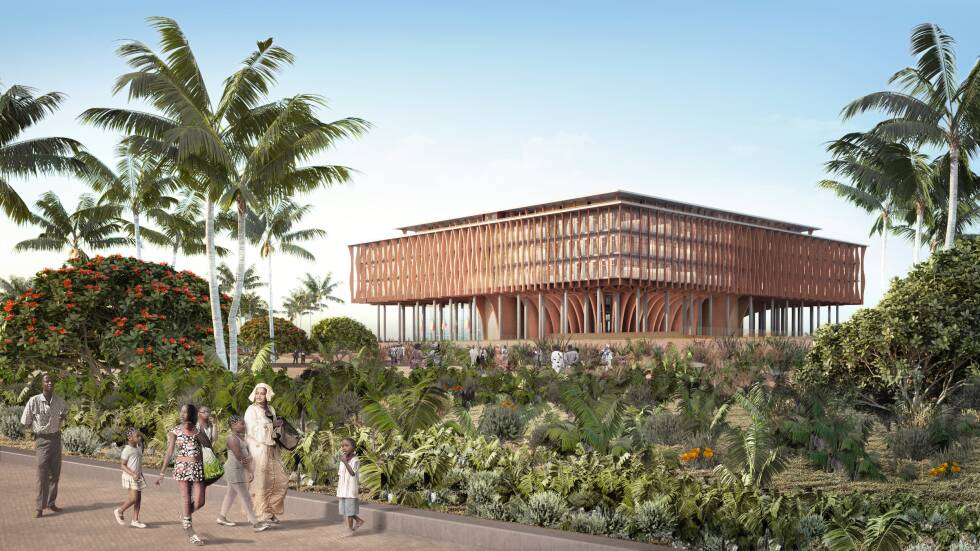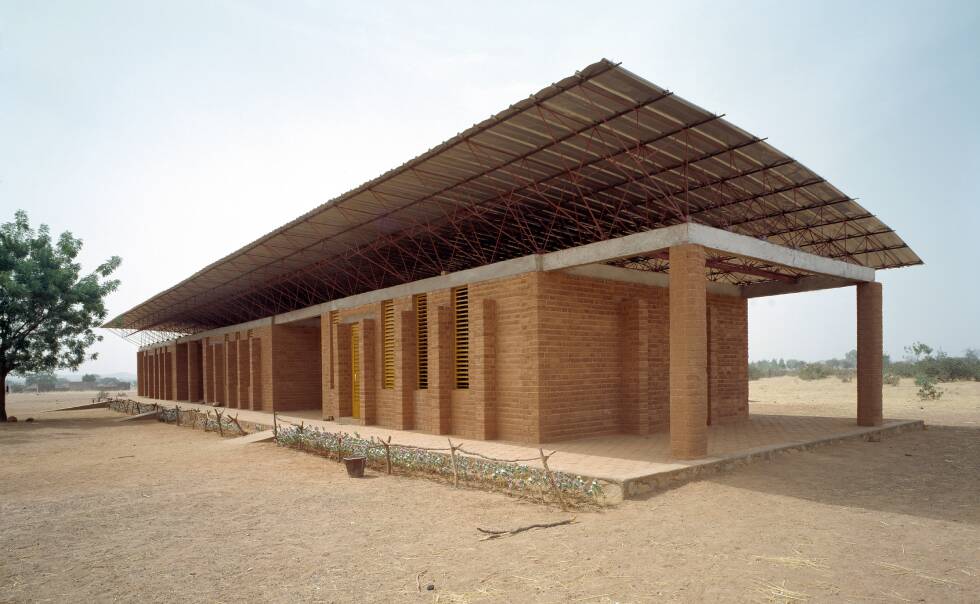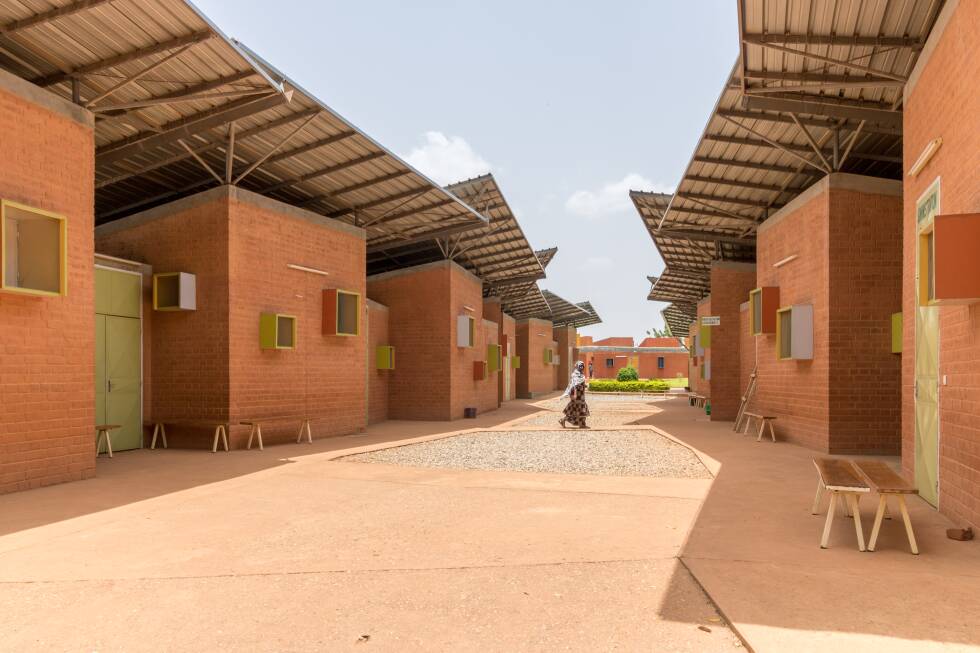
Diébédo Francis Kéré is the first African architect who has become the winner of the prestigious 2022 Pritzker Architecture Prize. In this post, at SURFACES REPORTER (SR), we will see what makes the 57-years old architect's works so special that he received this year’s architecture’s highest honor. Take a look:
Also Read: Why Anne Lacaton and Jean-Philippe Vassal Won The 2021 Pritzker Prize? Their Journey and Major Works | Surfaces Reporter
It is first time in the four-decade history of The Pritzker Architecture Prize that a black architect is bestowed with the prestigious annual award. Diébédo Francis Kéré, a Burkinabè architect, got the award for his outstanding body of work, which "empowers and transforms communities".
His Initial Years
Born In the village of Gando in West Africa’s Burkina Faso, Kere earned his architecture degree at Berlin’s Technische Universität in 2004, which is considered one of Europe’s reputed educational institutions. He was the eldest son of the village chief and the only child in his family who ever went to school.

Benin National Assembly, Porto-Novo, Republic of Benin
The architect could comfortably reside in Germany and could have decided to concentrate on museums, high-res towers, and other arresting public buildings- massive projects that garner the top headlines and hefty fees. But he opted to return to Gando, a small town in the agricultural land of Burkina Faso in West Africa, where he grew up. He convinced his friends to contribute and saved enough to return home with $50,000.
Amazingly, there he garnered respect and recognition for creating innovative civic buildings, which not only blend local building materials with advanced technology but also open opportunities for jobs and training for local laborers. His endeavors to incorporate local people into building sites have already employed many and at the time all of his projects in Africa are being built by people trained by him.
His First Project
When he was in college in 2001, he built his first building which was a Gando Primary School for his community using local building materials like mud. At first, Ryszard Kapuscinski, the notable Polish journalist-author, was suspicious of the choice of the material that how one protects a school building when rains or floods come. After many rounds of conversations, when Kere resorted to numerous drawings & small-scale models to show how it was a durable and reliable material., they ultimately agreed. The construction work started with carrying rocks that would be powdered and crushed to be used as bricks for walls and flooring.

The Gando Primary School, Burkina Faso
The community collaborated to beat the rock and slay the gravel, hammer with primitive tools, till the coarse texture gave way to clay. The building work was finished in 2001, and the architect ensured that there will be proper air and ventilation in the building.
This project was recognized in 2004 with the prestigious Aga Khan Award, for sustainable projects built in nations with a significant Muslim presence. The simple mud school in Gando, initially created to serve 150 children, has later extended into a set of buildings that currently serves around 700 students. The later constructions include a major extension, a library, and teacher’s housing.
The architect founded Kéré Foundation, an NGO dedicated to creating buildings in Gando with his college friends. He also founded his eponymous firm Kéré Architecture in 2005, with studios in Burkina Faso and Germany.
Also Read: Arata Isozaki becomes the Eighth Japanese Winner of the Pritzker Prize 2019
His Other Notable Projects
The Burkinabè architect has created several outstanding buildings. Here is a list of a few of his noteworthy projects:
National Park of Mali, 2010

It marks the 50th anniversary of the independence of Mali. The architect integrated a myriad of structures to the National Park in Bamako, Mali's capital with the prime objective to unite the overlooked zoological and botanical gardens. He used natural stone to wrap the buildings and provide ample shaded spaces for its visitors.
Léo Surgical Clinic & Health Center, 2014, Burkina Faso

This clinic is designed as a cluster of modules arranged along a central street comprising various surgical facilities, an in-patient ward, and a maternity unit serving a population of over 50,000 people. Rammed earth bricks are used in the construction of this project that features vibrant projecting bay windows that are positioned at different levels across the exterior of each module. Large overhanging roofs protect from the sun’s harsh rays and are attached to rainwater collection systems for irrigation use.
Serpentine Pavilion, 2017, UK

This beautiful indigo-blue structure with a latticed canopy and courtyard in the center is designed by the architect for the 2017 Serpentine Pavilion. The center of attraction of the pavilion is its indigo-coloured walls and an inverted latticed canopy, which was created to funnel rainwater into a waterfall.
Xylem Pavilion, 2019, US

Kéré used dead trees to construct this 256-square-meter pavilion at Montana's Tippet Rise Art Center. The trees and pine logs that were felled during natural cropping processes, were utilised to create the roof, seats and columns of this pavilion.
Startup Lions Campus, Turkana County, Kenya, 2021

Located in Kenya’s Turkana County, Startup Lions Campus is a training and educational complex designed by Kéré in 2021. It is the first information and communications technology (ICT) campus in the Rift Valey, tucked on the banks of Lake Turkana- the biggest desert lake in the world. The firm took cues from the ‘towering mounds built by termite colonies in the region’ to design its shape. The tower design creates a stack effect to naturally maintain the coolness of the interiors by drawing out warm air upwards, while clean air is introduced throught specially designed low-level openings.
Many of his other outstanding works including, Sarbalé Ke, Coachella Valley Music and Arts, Naaba Belem Goumma Secondary School, Burkina Faso, Léo Doctors’ Housing, Burkina Faso, Benin National Assembly, Porto-Novo, Republic of Benin, to name a few.
Pritzker Jury’s Statement About His Work
The Pritzker jury said, "He has served as a singular beacon in architecture. He has shown us how architecture today can reflect and serve needs, including the aesthetic needs, of peoples throughout the world."

Sarbalé Ke, Coachella Valley Music and Arts
The jury further added Francis Kéré’s pioneering architecture – sustainable to the earth and its inhabitants – in lands of extreme scarcity. He is equally architect and servant, improving upon the lives and experiences of countless citizens in a region of the world that is at times forgotten… Through buildings that demonstrate beauty, modesty, boldness and invention, and by the integrity of his architecture, Kéré gracefully upholds the mission of this Prize.”
Talking about his climate-responsive approach and brilliant architectural solutions, Jury said, “Kéré has found brilliant, inspiring and game-changing ways to answer these questions over the last decades. His cultural sensitivity not only delivers social and environmental justice, but guides his entire process, in the awareness that it is the path towards the legitimacy of a building in a community. He knows, from within, that architecture is not about the object but the objective; not the product, but the process.”
Keep reading SURFACES REPORTER for more such articles and stories.
Info and images courtesy: https://www.kerearchitecture.com/
Join us in SOCIAL MEDIA to stay updated
SR FACEBOOK | SR LINKEDIN | SR INSTAGRAM | SR YOUTUBE
Further, Subscribe to our magazine | Sign Up for the FREE Surfaces Reporter Magazine Newsletter
Also, check out Surfaces Reporter’s encouraging, exciting and educational WEBINARS here.
You may also like to read about:
RAK Ceramics acquire Kludi Group, to strengthen presence in European market | SURFACES REPORTER Material News Update
Students Propose 3D Printed Coral Reef Dwellings to Rejuvenate Marine Ecosystem | C-Ecology
First Concrete 3D Printed Houses Built For Indian Army Jawans | Military Engineering Services | Gujarat | SR Report
And more…